The Town of Newport sits on the North Pembrokeshire coast, between Fishguard and Cardigan, on the estuary of the River Nevern. The War Memorials to the men of Newport who gave their lives in both World Wars comprise of two brass plaques in the Memorial Hall, plus there is a scroll in the Church which commemorates all of the parishioners who served in the Great War.
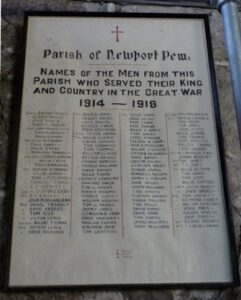
Boer War
James Beaumont Standly Alderson, Captain, 1st Battalion, Royal Irish Regiment. James was born on 1 July 1869, the son of Edward and Caroline Alderson. He had served at the Tirah from 1897-8, before moving to South Africa with his battalion. He was wounded while leading his men on the assault on Bethlehem on 7 July 1900, and died of wounds on 8 July 1900, aged 31. James is not commemorated on the Pembroke County Boer War Memorial, but on a plaque in the Church at Newport, Pembs.

The Great War, 1914-1918
Henry Augustus Butters, Second Lieutenant, Royal Field Artillery. Henry was born on 28 April 1892, the son of Henry Augustus Butters and his wife Lucy Woodworth Beebee of Alta Vista, San Francisco. He arrived in the U.K. in 1915 and lived initially at Stow on the Wold, where he was commissioned into the 11th Battalion, Warwickshire Regiment. After his commission he was living at Newport, when he was transferred into the Royal Field Artillery, serving in ‘B’ Battery, 109th Brigade. The Brigade moved to France, and fought at the Battle of the Somme, and it was on the Somme that Henry was Killed in Action on 31 August 1916, aged 24. He is buried at Meaulte Military Cemetery, France. Henry is not commemorated locally.
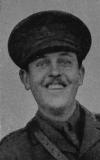
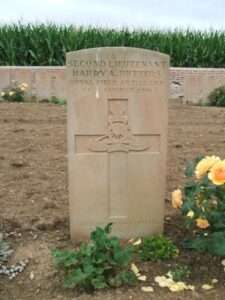
Percy Montgomery Craddock, Rifleman, 552288, London Regiment. Percy was the son of Frederick and Margaret Craddock, of Hampstead, London. He married Lucy James, the daughter of John and Ruth James, of Pentervin, Pontvane, in London on 20 May 1916. Percy was employed on the staff of the Bolivar Railway, Venezuela, before enlisting in 1915 into the 2/16th Battalion, London Regiment (Queen Victoria’s Rifles). The battalion was attached to 179 Brigade, 60th (London) Division. On 30 May 1918, the Battalion left for France, where it joined 89 Brigade, 30th Division on 30 June 1918. They were in the Flanders sector, and took part in the great offensive from August onwards, but Percy took ill, and was sent to No. 14 General Hospital at Wimereux, where he Died of Sickness on 20 October 1918, aged 34. He is buried at Terlincthun British Cemetery, Wimille, France. Percy is not commemorated locally, as he never resided at Newport, but his widow was a local, and returned from Hampstead after the war to reside at Westwood, Newport. Lucy never remarried, and died in Pembrokeshire on 20 May 1964.
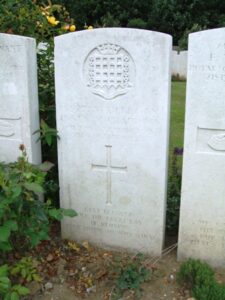
Rowland Griffith Daniel, Sergeant, 290291, Welsh Regiment. Rowland was born in 1895, the son of Thomas and Elizabeth Daniel, of The Mount, Newport. He enlisted at Cardiff into the 7th Battalion, Welsh Regiment, which was formed as a Cyclist battalion at Newport Road, Cardiff on 4 August 1914. The Battalion remained in the U.K. for the remainder of the war, stationed at Berwick and Montrose, and was based at Seaton Carew in early 1917. Rowland took ill and died on 27 March 1917, aged 22. He is buried at St. Mary’s Churchyard, Newport.
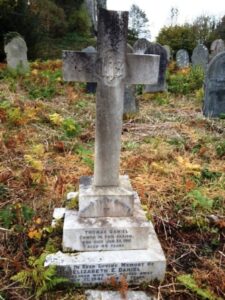
David Philips Davies, Master Mariner, Mercantile Marine. David was born in Newport, the son of John and Mary Davies. He served with the Mercantile Marine as Second Mate aboard the S.S. Gisella (London). On 17 April 1917 Gisella struck a mine, causing damage to her hull, but not sinking her. David was killed by the explosion. He was 60 years old, and is commemorated on the Tower Hill Memorial, London and on his parents grave at Newport.

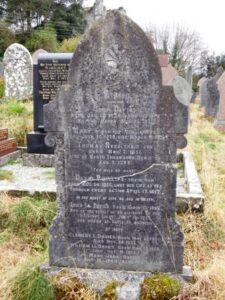
George Stanley Davies, Driver, T4/144611, Royal Army Service Corps. George was born at Trewern, Newport, the son of John Howell and Mary Davies. The family later resided at Howelston, Little Haven. George enlisted at Haverfordwest into the Army Service Corps, and was posted to the 1st Division Indian Cavalry in France. George became ill towards the end of his first winter in France, and died of pneumonia in hospital on 18 April 1916, aged 20. He is buried in Le Treport Military Cemetery, France.
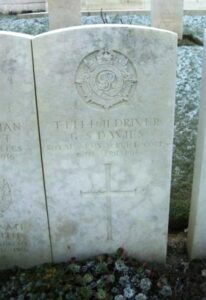
Gwilym Davies, Corporal, 15710, Army Pay Corps. Gwilym was the son of the Reverend William and Mrs Hannah Davies, of Bank Terrace Newport. He served during the Great War in the Army Pay Corps. He died at Liverpool on 3 March 1919, aged 21, and is buried at St Mary’s Churchyard Newport, in Grave 16.14.
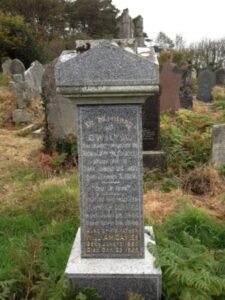
James Lloyd Davies, Corporal, 18507, Royal Engineers. James was the son of Thomas James Davies and Martha Davies, of Newport. He served in France from 8 September 1914 with the 38th Field Company, Royal Engineers, which was attached to the 6th Division, before being posted to the 152nd Field Company, Royal Engineers. James served in France for most of the war, until being shot in the thigh during the great advance during September 1918. He was evacuated to 34 Casualty Clearing Station before returning home, and died on 13 October 1918, aged 30. He is buried at St Mary’s Churchyard Newport.
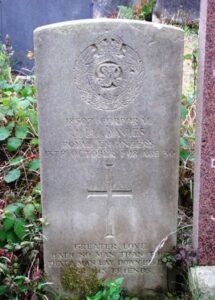
John Davies, Master, Mercantile Marine. John was born in Newport in 1857, and prior to the war lived with his wife Letitia Davies, at 1, Rhyddings Park Road, Swansea. He served in the Mercantile Marine, as Master on the SS Franz Fischer. On 1 February 1916, Franz Fischer was off Kentish Knock when she was bombed by the German Zeppelin L-19, and sank with the loss of 13 lives. John was 59 years old when he died that day, and is commemorated on the Tower Hill Memorial, London. John is not commemorated at Newport.
John Howard Davies, Second Lieutenant, Royal Welsh Fusiliers. John was born in Newport, the son of John Philip and Priscilla Anne Davies. The family later resided at Bron-y-Coed, Pontardawe, Glamorgan. John was commissioned from the Inns of Court OTC into the 4th Battalion, Royal Welsh Fusiliers. John was then posted to France, where he was attached to the 2nd Battalion, South Wales Borderers, who had arrived at Marseilles from Gallipoli via Egypt, on 15 March 1916. He fought at the Somme with the Battalion, before they moved north to Ypres to take part in the Battle of Passchendaele. John was Killed in Action at Ypres, on 4 July 1917, aged only 22. He was buried in Bard Cottage Cemetery, Belgium.
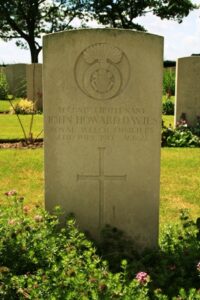
John William Davies, Seaman, Mercantile Marine. John was born in Newport in 1898, the son of David and Margaret Davies, of Penrallt Fach. He served in the Mercantile Marine aboard the SS Torrington, a Cardiff registered cargo steamer. On 8 April 1917, Torrington was on voyage from Savona to Barry in ballast, when she was torpedoed and sunk by the German submarine U-55, 150 miles southwest of the Scilly Islands, with the loss of 34 lives. John was 18 years old, and is commemorated on the Tower Hill Memorial, London.
Joseph Davies, Master Mariner, Mercantile Marine. Joseph was the son of Walter and Mary Davies and the Husband of Jane Davies of Llysfair, St. Mary’s Street, Newport. He served in the Mercantile Marine as 1st Mate aboard the SS Bayreaulx, a London registered cargo steamer. On 20 October 1916, Bayreaulx was en route from Cardiff to Montreal in ballast when she was torpedoed and sunk by the German submarine U-63, with the loss of 23 lives. Joseph was 47 years old when he died that day, and is commemorated on the Tower Hill Memorial London.
Edward Francis Drewitt, Private, 307170, Lancashire Fusiliers. Edward was born at Holt, Wiltshire in 1880, the son of Jacob and Mary Ann Drewitt. He resided at St Mary’s Street, Newport prior to the war with his wife Sarah, and son Howard. At the outbreak of war Edward enlisted at Newport, into the army, and was posted to the 2/8th Battalion, Lancashire Fusiliers, part of 197 Brigade, 66th Division. The Division landed at Havre on 28 February 1917, and moved to the Flanders sector. Edward had only been in Flanders a few weeks when he was seriously wounded. He was brought back to the Base Hospital at St. Omer, but Died of Wounds there on 17 April 1917, aged 37. He is buried in Longuenesse (St. Omer) Souvenir Cemetery, France. After Edwards death, Sarah moved back to Sutton Road, Somerton, Somerset.
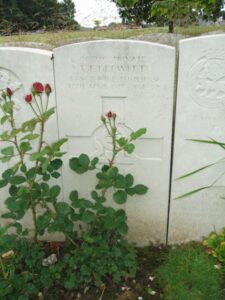
Arthur Edwards, Private, 4943, Royal Welsh Fusiliers. Arthur was born in Newport, the son of James and Sarah Edwards, of Fern Hill. He enlisted at Pontypridd on 7 April 1913 into the Royal Welsh Fusiliers. At the outbreak of war Arthur was posted to the 1st Battalion, Royal Welsh Fusiliers, which was attached to 22 Brigade, 7th Division. The battalion had been rushed back from Garrison duty in Malta prior to the war and landed at Zeebrugge on 6 October 1914, but were too late to prevent the city falling, and so moved south to Ypres, where they fought at First Ypres. During the spring of 1915 the Division fought at the Battle of Neuve Chapelle and the Battle of Aubers Ridge, before being embroiled in the Battle of Festubert, which began on 15 May 1915. Arthur was Killed in Action at Festubert on 16 May 1915, aged 22. He is commemorated on the Le Touret Memorial, France.
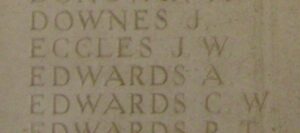
Benjamin Edwards, Private, 35229, Welsh Regiment. Benjamin was born in Aberdare, the son of David and Amelia Edwards. The family had moved to Rhos-Y- Nanty, Newport prior to the war. Benjamin served in the 2nd Battalion, the Welsh Regiment, which was part of 3 Brigade, 1st Division, which had been in France since the outbreak of War, fighting in the Battle of Mons all of the way through most of the major Battles of the War, all along the Western Front. The final action fought in by the 2nd Welsh was the Battle of the Sambre, where they fought the Passage of the Sambre-Oise Canal. Benjamin had survived the war only to die of influenza on 7 February 1919, aged 22. He is buried at St Mary’s Churchyard, Newport.
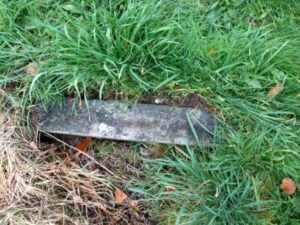
John Edwards, Private, 43175, Leicestershire Regiment. John was born at Newport, the son of Benjamin and Elizabeth Edwards. The family later resided at 18, Grove Street, Nantyfyllon, Glamorgan. John enlisted at Maesteg into the Welsh Regiment, but later transferred into the 1st Battalion, Leicestershire Regiment, part of 16 Brigade, 6th Division. The Division had landed at St. Nazaire on 10 September 1914 and fought on the Aisne and at Hooge before the 1st Leicester’s were transferred into 71 Brigade, 6th Division on 17 November 1915. They fought on the Somme and at the Battle of Cambrai, before being heavily involved in trying to stem the German Spring Offensive of 1918, where they fought at Cambrai before being sent north to Flanders, where they fought in the Battle of Bailleul. John was Killed in Action at Bailleul on 14 April 1918, aged 35. He is commemorated on the Tyne Cot Memorial, Belgium. John is not commemorated at Newport.
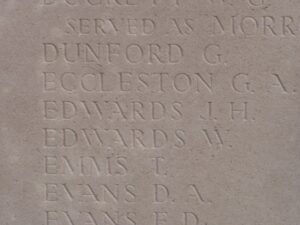
William Edwards, Fireman, Mercantile Marine. William was born at Newport, the son of Mrs Mary Anne Evans and the Husband of Hannah Edwards, Brondsbury House, Newport. He served as Fireman in the Mercantile Marine, aboard the SS Cressida, a Southampton registered cargo steamer. On 17 March 1918, Cressida was on voyage from Preston to Dublin with a cargo of coal, when she was was sunk by the German submarine U-103, with the loss of three lives. William was 43 years old when he died that day, and is commemorated on the Tower Hill Memorial, London.
George Erriottis, Private, 33891, Welsh Regiment. George was born at Whitechapel, Middlesex, the son of Demetrius and Jessie Erriottis. Prior to the outbreak of war he had moved to Newport, and he enlisted at Fishguard into the 9th Battalion, Welsh Regiment, part of 58 Brigade, 19th (Western) Division. The Division arrived in France in July 1915 and their baptism of fire was at the Battle of Loos. They moved south to the Somme, where they took part in the Somme Offensive, capturing La Boiselle, and stayed on the Somme for the duration of 1916. They later moved north to Ypres where they fought at the opening of the Battle of Passchendaele- the Battle of Messines, and it was at Messines that George was Killed in Action on 7 June 1917, aged 18. He is commemorated on the Ypres (Menin Gate) Memorial, Belgium. George is not commemorated at Newport.
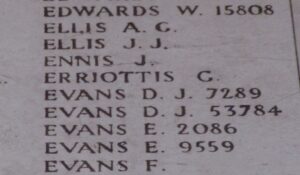
John Raymond Evans, Apprentice, Mercantile Marine. Raymond was born in Newport, the son of Benjamin Raymond and Mary Evans of Virginia House, Newport. He gained an Apprenticeship in the Mercantile Marine, aboard the S.S. Paddington, a London registered cargo steamer. On 21 July 1917 Paddington was en route from Cartagena to Britain with admiralty cargo and passengers, when she was was sunk by the German submarine U-96, 250 miles west from Fastnet, with the loss of 29 lives. Raymond was only 17 years old, and is commemorated on the Tower Hill Memorial, London.
William Clifford Evans, Corporal, 9987, Royal Fusiliers. William was born at Newport, the son of Thomas and Anne Evans, of Glanafon. He moved to live in Cardiff, and enlisted there into the 20th Battalion, Royal Fusiliers, part of 19 Brigade, 33rd Division. The Battalion was actually disbanded in France on 16 February 1916 but William is listed as serving with them at the time of his death, when he was Killed In Action on 25 December 1916, Aged 21. He is buried at Grove Town Cemetery, Méaulte, France.
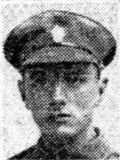
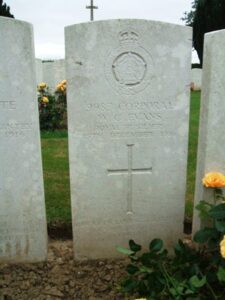
Price Gibby, Corporal, 40724, Cheshire Regiment. Price was born at Dinas Cross, the son of David and Magdalen Gibby. The family later ran the Royal Oak, at Newport. He worked and lived at Llandeilo and enlisted at Ammanford into the army, and was posted to the 15th Battalion, Cheshire Regiment, a Bantam Battalion which formed part of 105 Brigade, 35th Division. The Division first fought at the opening stage of the Somme Battle, then during the Battle of Passchendaele and Battles of 1918 during the German Offensive. Price was Killed in Action on 4 July 1918, aged 21. He is buried at Westoutre British Cemetery, Belgium.
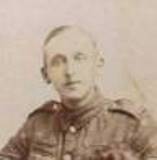
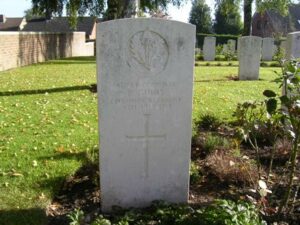
Thomas Howell, Reverend, Kings Shropshire Light Infantry. Thomas was born in Newport, the son of Howell and Mary Ann Howell. The family was from Maenclochog, but with Howell being a Minister, moved around West Wales over the years. Thomas was educated at Swansea Grammar School, the University College of Wales at Cardiff, and at Brecon Congregational College. He obtained his BA at Cardiff University in 1907 and took up a position in the ministry at Leominster in 1910 where he stayed for three years. In March 1914 Thomas took up a position at The Bridge Street Congregational Church, Walsall. During 1916 he served three months in France with the YMCA, and realising that he was needed at the front, Thomas joined the Army Chaplains’ Department in June 1917, and was attached to the 6th Battalion, King’s Shropshire Light Infantry. The battalion was attached to the 20th Light Division, and had fought on the Somme in 1916, and at Passchendaele in 1917, before being moved to positions near Arras, where they took part in the Battle of Cambrai. The Division had suffered terribly at Welsh Ridge, and the on 1 December 1917 were tasked with the capture of the fortified village of Gonnelieu, on the Hindenburg Line. The attack was repulsed by the Germans, and Thomas was Killed in Action here that day, on 1 December 1917, aged 33. He is buried in Fifteen Ravine Cemetery, Villers-Plouich, France.
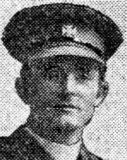
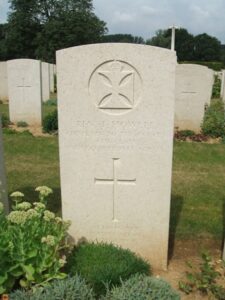
Frederick Howells, Seaman, Mercantile Marine. Freddie was born at Newport, the son of Howell Howells. Freddie served in the Mercantile Marine aboard the SS T.R. Thompson, a Sunderland registered cargo steamer. On 29 March 1918, T.R. Thompson was en route from Algeria to Middlesborough, carrying a cargo if iron ore, when she was torpedoed and sunk by the German submarine UB-57, with the loss of 13 lives. Freddie was 28 years old when he died that day, and is commemorated on the Tower Hill Memorial, London.
George S. Hughes, 2nd Engineer, Mercantile Marine. George was born in Newport, the son of John and Mary Hughes. He served in the Mercantile Marine as Second Engineer aboard the SS Sonnie, a London registered cargo steamer. On 11 August 1917, Sonnie was en route from Bilbao to Middlesbrough with a cargo of iron ore, when she was sunk by the German submarine UC-77, with the loss of 11 lives. George was 33 years old when he died that day, and is commemorated on the Tower Hill Memorial, London, and on his parents grave at Newport.
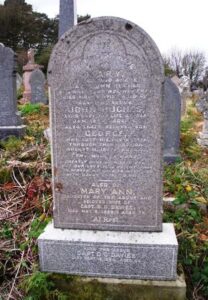
William James, Gunner, 28282, Royal Field Artillery. William was born in Newport, the son of Thomas and Mary James, of Summer Hill, Newport. He enlisted at Goodwick on 9 September 1914 into the Royal Artillery, and landed in France on 2 September 1915, being posted to ‘A’ Battery, 75th Brigade, Royal Field Artillery, which was attached to the Guards Division. William saw his first action during the Battle of Loos later that month. The division then moved to Ypres for several months, before being moved to the Somme in the summer of 1916. William was wounded in the back in August, but returned to duty, and was killed in action at the Battle of the Somme on 12 October 1916, aged 22. He is commemorated on the Thiepval Memorial, France.

Frederick William (Freddie) John, Private, 31159, Kings Shropshire Light Infantry. Freddie was born in 1886, the son of William and Julia John, of Upper Bridge Street, Newport. He worked as a Postman prior to the war, and enlisted at Newport originally into the Welsh Regiment. He transferred into the 5th Battalion, King’s Shropshire Light Infantry, part of 42 Brigade, 14th (Light) Division, and they landed at Boulogne on 20 May 1915. The Division fought at Hooge and Bellewarde, and also on the Somme in 1916, then fought in the Battles of Arras and Passchendaele, suffering heavy casualties. It was during the second phase of the Passchendaele Offensive, the Battle of Langemarck, that Freddie was Killed in Action on 22 August 1917, aged 31. He is commemorated on the Tyne Cot Memorial, Belgium.
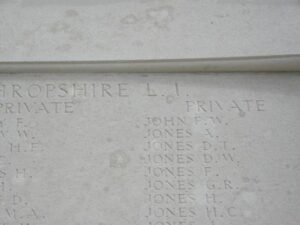
John Oliver Jones, Gunner, 117839, Royal Field Artillery. John was born at School House, Newport in 1893, the son of Josiah Richard Jones, and of Elizabeth ones (nee Sandbrook). He worked at Abertridwr as a Grocer prior to the war, and enlisted at Ferndale into the 54th Battery, 34th Brigade, Royal Field Artillery. The Brigade was attached to the 2nd Division until January 1917, then left the Division to be an Army Brigade. John was killed in action at the Battle of Passchendaele, on 15 August 1917, aged 24. He is buried at New Irish Farm Cemetery, Belgium.
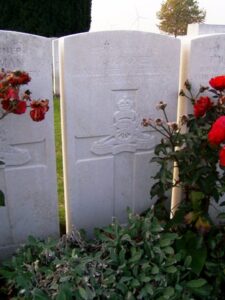
John Rees Jones, Private, 117563, Machine Gun Corps. John was the son of William and Anna Jones, of Werndew, Dinas Cross. He resided at Newport prior to the war, and enlisted at Carmarthen into the Welsh Regiment. Prior to the Battle of the Somme, Battalion machine gunners were formed into a Machine Gun Corps. John was transferred into the 38th Battalion, Machine Gun Corps, which were part of the 38th (Welsh) Division, and he fought with the Division at Mametz Wood, before moving to Flanders and fighting at Third Ypres. The Division had returned to the Somme in mid 1918, where they fought at the Battle of Albert, and this is when John was wounded. He died of wounds at an Advanced Dressing Station on 1 September, 1918, aged 24, and is buried in Contalmaison Chateau Cemetery, France.
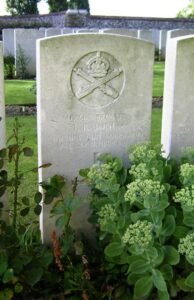
Evan Ernest Lawrence, Private, 10500, London Regiment (Artists Rifles). Ernest was born at Newport in 1888, the son of Thomas and Mary Lawrence. He had been educated at Carmarthen College, and was a School Master at Wolfscastle prior to the war, residing at Bryn Amlwg, Letterston. He married Florence Griffiths at Hill Park Baptist Chapel, Haverfordwest on 12 August 1913, and on 16 July 1915 Florence gave birth to their son, Thomas Emlyn Lawrence. Evan enlisted in London on 8 January 1917 into the 1/28th Battalion, the London Regiment (Artist’s Rifles), which formed part of the 63rd Royal Naval Division. The Artist’s Rifles were an elite Battalion, with many of their men being commissioned as Officers into other Battalions of the British Army. Ernest Died at the 1st London General Hospital of Septicaemia on 10 February 1917, and his body was brought home for burial at Letterston (Saron) Baptist Cemetery, to the right of the entrance.
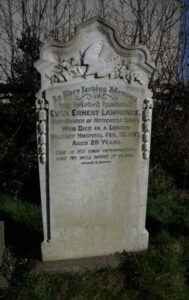
John Herbert Lloyd, Private, 38519, Gloucestershire Regiment. Herbert was born at Eglwyswrw in 1898, the son of David and Elizabeth Lloyd, of Rofftcharles. He enlisted at Carmarthen, originally serving with the South Wales Borderers, but was transferred to the 8th Battalion, Gloucestershire Regiment, which formed part of 57 Brigade, 19th (Western) Division. The 19th Division fought at Loos and the Somme, then moved to Flanders, where they fought in the Battle of Passchendaele. It was on the opening day of the Battle of the Menin Road that Herbert was Killed in Action, on 20 September 1917, aged 19. He is commemorated on the Tyne Cot Memorial, Belgium.
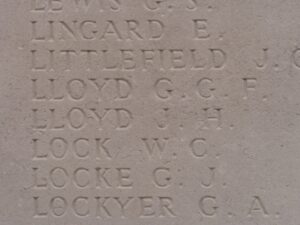
Marteine Kemes Arundel Lloyd, Captain, Grenadier Guards. Marteine was born at Bronwydd in 1890, the son of Sir Marteine Owen Mowbray Lloyd, 2nd Baronet, and Lady Katharine Helena of Bronwydd, Henllan, Cardiganshire. He was educated at Lyndhurst and Eton, and was commissioned into the 2nd Battalion Grenadier Guards. The battalion had been in France since the outbreak of war, taking part in the retreat from Mons to the Marne. It took part in the First and Second Battles of Ypres, before being attached to the 4th Guards Brigade, 2nd Guards Division. The Guards Division had fought at the Battle of Loos, and had moved south to the Somme in 1916, where they fought at Ginchy. Marteine was Killed In Action on 15 September 1916, aged 26, and is buried at Delville Wood Cemetery, Longueval, France.
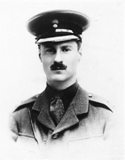
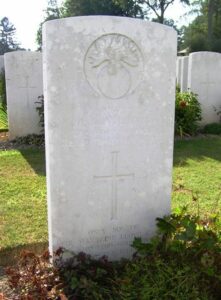
Thomas Richard Morris, Master Mariner, Mercantile Marine. Thomas was born in 1886, and lived at Grove Park, Newport, with his wife Annie Mary Morris. Thomas served in the Mercantile Marine, as 1st Mate on the SS Atlantic City. He died at sea during a voyage from Datrar to Gibraltar on 13 November 1918, aged 52. Thomas is not commemorated by the CWGC as he was not a casualty of war.
Arthur Edward Nichols, Gunner, 371340, Royal Garrison Artillery. Arthur was born at Newport in 1892, and was the Husband of Rosena Nichols of 4, King Street, Newport. He enlisted at Newport into the 275th Siege Battery, Royal Garrison Artillery. Not a lot is known of Arthur’s service, but he was wounded at Ypres during the Battle of Passchendaele, and died of wounds at the Casualty Clearing Station at Lijssenthoek on 14 November 1917, aged 25. He is buried at Lijssenthoek Military Cemetery, Belgium.

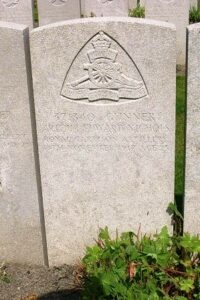
David Owen, Seaman, Mercantile Marine. David was born at Newport, the son of Joshua and Esther Owen. He was the Husband of Keturah Owen of 2 High Street, Newport. David served in the Mercantile Marine aboard the SS Cressida, a Southampton registered cargo steamer. On 17 March 1918, Cressida was en route from Preston to Dublin with a cargo of coal, when she was sunk by the German submarine U-103, 16 miles off the Skerries, Anglesey, with the loss of 3 lives. David was 41 years old when he died that day, and is commemorated on the Tower Hill Memorial, London.
Thomas John Peregrine, Gunner, 25989, Royal Field Artillery. Thomas was born at Newport, the son of David and Elizabeth Peregrine, of Goat Street, Newport. He enlisted at Goodwick into the Royal Artillery, and was promoted Shoeing Smith before landing in France on 28 August 1915 with ‘A’ Battery, 74th Brigade, Royal Field Artillery. Thomas saw his first major action at the Battle of Loos from 25 September 1915 onwards. He was killed in action at Loos on 5 October 1915, aged 23. Thomas is commemorated on the Loos Memorial, France.
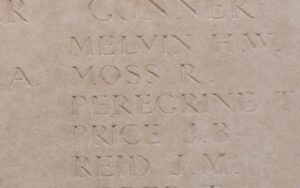
Thomas Lewis Rees, Private, Welsh Regiment. Thomas was the son of Thomas and Anne Rees, of Dyffryn, Goodwick. He worked as a fireman in a quarry prior to the war, and married Sarah Griffiths in 1907. The couple resided at Tynewydd, Newport. Thomas served with the 14th Battalion, Welsh Regiment, which was attached to 114 Brigade, 38th (Welsh) Division. His name looks to be an addition to the brass memorial plaque, but is not shown as a casualty on the original parchment memorial scroll. He died on 13 January 1923, too late for commemoration by the CWGC.
David Thomas, Private, 117838, Machine Gun Corps. David was born at Newport. He enlisted there into the Welsh Regiment, with the service number 203063. He was later posted to the 21st Battalion, Machine Gun Corps, which was attached to the 21st Division. The division had been in France since September 1915, and had taken part in most of the major battles thereafter, at Loos in September 1915 and on the Somme in 1916. During 1917 the division fought at Arras, Passchendaele and at Cambrai. The division was one of the units hit by the German Spring Offensive on the Somme in March 1918, fighting at the Battle of St Quentin and the First Battle of Bapaume, before being evacuated to Flanders to rest. Unluckily though, the Germans launched a fresh offensive on the Lys in April 1918, and the division was caught up in the thick of the fighting again, during the Battle of Messines, and the Second Battle of Kemmel. The battered division now moved south to rebuild, but again was unlucky, as the Germans launched a fresh offensive on the Chemin-des-Dames, and the division was caught up in the action again, fighting in the Battle of the Aisne, before moving north to the Somme sector, where they took part in the great offensive which ended the war. At some time in 1918 David was taken prisoner by the Germans, and brought to a POW Camp in Germany. He died in captivity on 18 October 1918, and is buried in Berlin South Western Cemetery, Germany. The memorial states Daniel Thomas, but this must be the correct man.
David Watkyn John Thomas, Donkeyman, Mercantile Marine. David was born in Newport, later moving to London, with his wife Elizabeth Mary Thomas, to 45A, Well St., Whitechapel, London. David served in the Mercantile Marine, as Donkeyman aboard the H.M.S. Ophir. David was found dead in the bottom of the hold of his ship whilst it was at anchor in Gibraltar on 12 February 1917, aged 36. He is buried at Gibraltar (North Front) Cemetery.
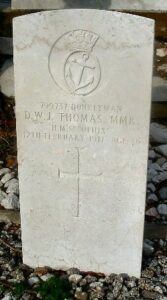
John Thomas, Private, 16284, Welsh Regiment. John was born at Dale in 1896, the son of Mark and Mary Thomas, of Wathwick. He worked as a farm hand at Newport prior to the war, and enlisted at Haverfordwest into the Welsh Regiment. John was posted to the 10th Battalion, Welsh Regiment, which was attached to 114 Brigade, 38th (Welsh) Division. The Division had landed in France during December 1915 and had spent its first winter in the trenches near Armentieres. In June it marched south to the Somme, where it was tasked with the capture of Mametz Wood. The attack on the wood began on 7 July 1916, but met with fierce resistance, and it took the Welshmen until 12 July to clear the wood. The Division suffered terrible casualties at Mametz, and was taken out of the line, and moved to Ypres to rebuild, taking up the front line north of Ypres, at Boesinghe, along the Yser Canal. On 6 May 1917 the 10th Welsh moved into the front line at Boesinghe, and after five days there were being relieved by the 14th Welsh on 11 May 1917 when John was killed in action by German shellfire. He was 20 years old, and is buried at Ferme-Olivier Cemetery, Belgium.
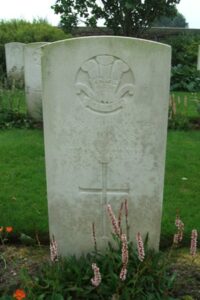
John Elwyn Thomas, Mechanical Engineer. John was the son of the Reverend and Mrs Thomas, of Major House, Newport. He was a Mechanical Engineer, and had been working in Africa prior to the war. John had come home for some leave, before returning to Africa aboard the SS Falaba. On 28 March 1915 Falaba was 38 miles off the Smalls Lighthouse, just one day into a voyage to Sierra Leone, when she was attacked and sunk by a torpedo from the German U-Boat U-28. John was among 104 people who were lost during the sinking, and was 26 years old when he died. John is not commemorated on the Tower Hill Memorial, although there is a Brass Memorial Plaque In The Lady Chapel at St Mary’s Church, Newport dedicated to him, and acknowledging his death. Strangely enough, the ‘Times’ casualty list of the ‘Falaba’ sinking does not list him.
John Tudor, Chief Steward, Mercantile Marine. John was born at Fishguard, the son of David And Elizabeth Tudor. For many years prior to the war he had resided with his wife Blanche Tudor (nee John), at Glanydon, Newport. John served in the Mercantile Marine as Chief Steward aboard the SS Australade, a Brisbane registered cargo steamer. John died when Australade was torpedoed and sunk near the Spanish Coast on 19 October 1917, aged 53. He is commemorated on the Tower Hill Memorial, London.
Thomas Edmond Varney, Able Seaman, Mercantile Marine. Thomas was born at Newport, the son of Jesse and Mary Anne Varney, of Penrallt, Newport. Thomas served in the Mercantile Marine, aboard the SS Kariba. On 21 April 1917, Kariba was en route from Java and Dakar to Falmouth with a cargo of sugar, when she was sunk by the German submarine, with the loss of 13 lives. Thomas was 24 years old when he died that day, and is commemorated on the Tower Hill Memorial, London.
David Vaughan, Private, 202517, Welsh Regiment. David was born in 1899, the son of Benjamin and Maria Vaughan, of Forest, Dinas Cross. He enlisted at Fishguard into the army, and was posted to the 17th Battalion, Welsh Regiment, a Bantam Battalion which formed part of 119 Brigade, 40th Division. The Division landed in France during June 1916, and fought during the latter stages of the Somme Battles, before taking part in the Battle of Cambrai. This is where David was Killed in Action, fighting at Bourlon Wood on 25 November 1917. He was just 18 years old, and is commemorated on the Cambrai Memorial, Louverval, France.
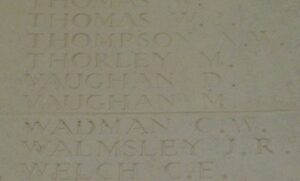
World War 2, 1939-1945
Kenneth Stanley Chessum, Flight Sergeant (Air Bomber), 1424441, Royal Air Force Volunteer Reserve. Kenneth was the son of the Revd. Albert James Chessum and Margaret Chessum, and the husband of Eileen Mary Oliver Chessum, of Newport. Kenneth served with 12 Squadron, RAF, which had departed for France at the outbreak of war, as part of the Advanced Air Striking Force equipped with Fairey Battles. After the British withdrawal from France in June 1940, the Squadron began night attacks on enemy shipping and re-equipped with Wellingtons. Kenneth survived the war, and remained with 12 Squadron after the Armistice. He was killed whilst on a flight from RAF Strubby when flying aboard Lancaster NE140, which disintegrated in the air whilst flying in heavy turbulence and crashed near the village of Beesby, Leicestershire on 1 February 1946, killing all six crewmen. He was 32 years old, and is buried at Binbrook (St. Mary) Churchyard.
David Reginald Davies, 2nd Engineer Officer, Merchant Navy. David was the son of John and Margaret Davies, and the Husband of Florence Davies of Netley Abbey, Hampshire. He served in the Merchant Navy aboard S.S. Graigwen (Cardiff), which was a 3,600 ton merchant steamer. During October, 1940 Graigwen was sailing in Convoy SC-6, with a cargo of maize, bound for Barry from Montreal. On 9 October, 1940 the convoy was spotted by the U-103, which sank two of the ships in the Convoy, and damaged the Graigwen. The Graigwen then slowed to a crawl, lagging behind the main convoy, and the next day, on 10 October, 1940 the U-103 returned and sank the helpless ship. David was killed in the sinking that day. He was 47 years old, and is commemorated on the Tower Hill Memorial, London.
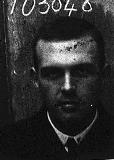
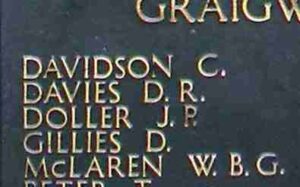
Wilfred Eurfyl Davies, Stoker, LT/KX108142, Royal Naval Patrol Service. Wilfred was the son of Samuel Lewis Davies and Martha Ann Davies, of Manorowen. He served in the Royal Naval Patrol Service, aboard H.M. Trawler Vidonia. Vidonia was patrolling the English Channel during the Normandy Battles, on 6 October, 1944 when she collided with another vessel and sank. Wilfred must have made it ashore, as he died the following day, on 7 October 1944. He was 27 years old, and is buried at Bayeux War Cemetery. Six of his crewmates were lost on the Vidonia, and are commemorated on the Lowestoft Memorial.
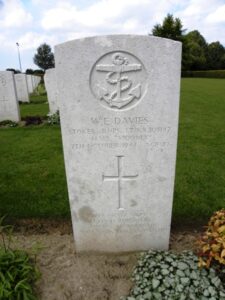
William Ellis Davies, Quartermaster, Merchant Navy. William was the Husband of Jane Ellis Davies. He served in the Merchant Navy, aboard the Liverpool registered steamship S.S. City of Guildford. On 27 March 1943 the City of Guildford was torpedoed and sunk by U.593 off Madeira. William was drowned in the sinking that day. He was 51 years old, and is commemorated on the Tower Hill Memorial, London.
Oliver James Edwards, Mate, Merchant Navy. Oliver was the son of Mr. and Mrs. D. Edwards, of Newport, Pembrokeshire, and the husband of Edith Mary Edwards, of Fishguard. He served in the Merchant Navy, aboard the S.S. Greenawn (Goole). Greenawn was a cargo ship, which had set sail from London on 25 March 1941 bound for Invergordon. The ship went missing on the voyage, and was declared a ‘War Loss’ on 3 April 1941. Oliver disappeared with the ship on 3 April 1941. He was 37 years old, and is commemorated on the Tower Hill Memorial, London.
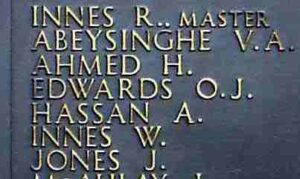
Thomas David Edwards, Master, Merchant Navy. Thomas served in the Merchant Navy as Master of the Government owned cargo steamer SS Ocean Fame. Thomas had taken part in dozens of convoys during his time in charge of the ship, and died of heart failure aboard Ocean Fame on 20 March 1945, whilst sailing in convoy ON-290 from Southend for New York. He was 59 years old, and is commemorated on the Tower Hill Memorial, London. Ocean Fame survived the war and served with the Merchant Navy until 1966 when she was broken up at Bilbao.
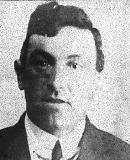
Arthur Cecil Montagu Griffin, Flying Officer, 116771, Royal Air Force Volunteer Reserve. Arthur was the son of George and Emma Griffin, and the husband of Marjorie Vernon Griffin, of Bayvil, Pembrokeshire. He served with 21 Squadron, Royal Air Force, which was a light bomber squadron, equipped with the De Havilland Mosquito. Arthur was killed when his Mosquito, Serial HR-516, was lost during a raid over the River Schelde, Holland on 28 May 1943. He was 33 years old, and is commemorated on the Runnymede Memorial, Surrey. Arthur does not seem to be commemorated locally.
David Glyn Harries, Third Officer, Merchant Navy. David was the son of Mrs. A. Harries, of Hill Crest, St. Mary’s Street, Newport. He served in the Merchant Navy aboard the S.S. Empire Stream (Greenock), which was a British Cargo Steamer built in 1941, of 2,922 tons. On 25 September 1941 she was on route from Huelva for Dundee carrying a cargo of 3,500 tons of potash when she was torpedoed by U-124 and sunk. 8 men were lost from a total crew of 35, one of which was David Harries. He was 25 years old, and is commemorated on the Tower Hill Memorial, London. His brothers Kenneth and Howard also fell.
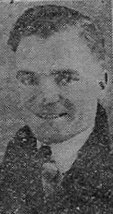
Howard Levi Harries, Chief Steward, Merchant Navy. Howard was the son of Mrs. A. Harries, of Newport. He served in the Merchant Navy aboard the S.S. British Monarch (Glasgow). Howard was drowned when the British Monarch was torpedoed and sunk by the German U-48 on 19 June 1940. He was 25 years old, and is commemorated on the Tower Hill Memorial, London. His brothers Kenneth and David also died on Merchant service during the war.
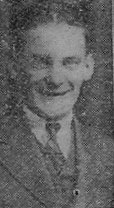

Kenneth George Harries, Third Engineer Officer, Merchant Navy. Kenneth was the son of Mrs. A. Harries, of Newport. He served in the Merchant Navy aboard the S.S. Garlinge (London).Kenneth died when the Garlinge was sunk by the German submarine U-81 on 10 November, 1942. Kenneth was just 21 years old, and is commemorated on the Tower Hill Memorial, London. His brothers David and Howard also fell. The U-81 had gained notoriety for sinking the Aircraft Carrier HMS Ark Royal on 13 November 1941.
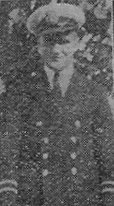
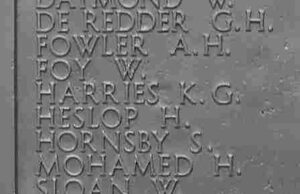
Thomas Gwyn Harries, Private, 14342641, The Middlesex Regt (Duke of Cambridge’s Own). Thomas was the son of Owen and Margaret Harries, and the husband of Elizabeth Mary Harries, of Parrog. He served in the 1/7th Battalion, Middlesex Regiment, which were a support unit to the 51st (Highland) Division. The 51st was mobilised at the outbreak of WW2 and they were sent to France and Belgium. In 1940, under French command, they fought a series of bold rearguard actions against the German advance, but were isolated and cut off at St Valery and were forced to surrender before they could be evacuated. The Division was reformed in England in 1941, and in June 1942 they were trained and ready and embarked for Egypt and the North African campaign. They fought in North Africa during El Alamein, Mareth, Medenine and Wadi Akarit, and later landed in Sicily. They were then moved back to the United Kingdom to prepare for the landings in North West Europe. Thomas had fought with the Division through the Normandy Battles, and through France and Belgium into Holland. After an epic march, and a series of battles, through Holland, the British reached the German border, and fought in the Battle of Reichswald. Thomas was killed in action on 12 April 1945 aged 32, and is buried in Reichswald Forest War Cemetery, Germany.
Trevor David Hoskins, Midshipman, Royal Naval Volunteer Reserve. Trevor was the son of William David and Eva Ann Hoskins, of Luton, Bedfordshire. He served with the RNVR at H.M.S. Byrsa, which was the Royal Naval establishment at Naples. Trevor died on 13 February 1946, aged just 19, and is buried at Phaleron War Cemetery, Greece.
John Anthony Hughes-Rees, D.F.M., Flying Officer (Pilot), 113942, Royal Air Force Volunteer Reserve. John was the son of Anthony Hughes-Rees, and of Anne Hughes-Rees, of Newport. He joined 609 Squadron, RAFVR on the 18th September 1940 at Middle Wallop as a Sergeant pilot. On 25th September his engine failed and he crash landed at Glastonbury in Supermarine Spitfire L1008. On the 8th July 1941 he was shot down in combat with several Messerschmitt Bf109’s and baled out of his Supermarine Spitfire. John was rescued by Air Sea Rescue off the Goodwin Sands at 06:30hrs. John was then awarded the Distinguished Flying Medal for his gallant flying, gazetted on 8 August, 1941. His citation read ‘This airman has completed a large number of operational sorties against the enemy and has destroyed at least four of their aircraft. In. every engagement he has shown courage and enterprise.’ John returned to his Squadron in November 1941, and was commissioned in December. In March 1942 he was posted to 73 OTU at Abu Sueir in Egypt as a Flying Instructor, and was promoted to Flying Officer in October 1942. Sadly John Hughes-Rees contracted Poliomyelitis and died 30 April 1943, aged 22, and was buried at Moascar War Cemetery. John is recorded as a Fighter Ace, having 4 and 1 shared destroyed, 1 probably destroyed and 1 damaged.
Idris Owen Isaac, Corporal, 7519883, Royal Army Medical Corps. Idris was the son of David Isaac, and Margaret Isaac, of Newport, and the husband of Peggy Jeannette Isaac, of Millbrook Devon. He served with 32 Company, Royal Army Medical Corps, which was in Singapore at the time of the Japanese invasion, and was killed in action on 14 February 1942, the day before the City was surrendered to the Japanese. Idris was 26 years old, and is commemorated on the Singapore Memorial.
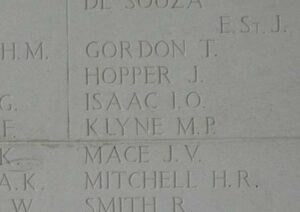
Wyndham Isaac, Able Seaman, Merchant Navy. Wyndham was the son of William Lloyd Isaac and Kathleen Isaac, of Newport. He served in the Merchant Navy, aboard the S.S. Tregarthen (London). She was sailed from Cardiff for Kingston, Jamaica, with a cargo of coal, and joined Convoy OB-329, which had left Liverpool on 31 May, 1941. Halfway across the Atlantic she was torpedoed and sunk by the German Submarine U-48, on 6 June 1941. Wyndham was drowned in the sinking of the ship that day. He was 28 years old, and is commemorated on the Tower Hill Memorial, London.
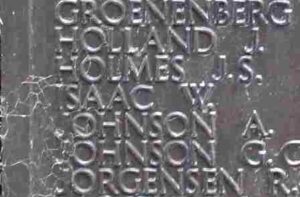
Daniel Alcfryn James, Private, 1771319, Welch Regiment. Daniel was the son of Joseph and Lena James, and the husband of Daisy Maude James, of Newport. He served with the 1st Battalion, Welch Regiment, which was stationed in Palestine at the outbreak of war. They served in the Western Desert, and moved to Greece, but were diverted to Crete. The Battalion was almost wiped out on Crete when the Island was invaded by elite German Paratroopers, and the remnants of the Battalion were evacuated to North Africa. Here they again suffered terrible casualties, before being brought up to strength. They then fought during the invasion of Italy, where Daniel was killed in action on 21 April 1945. He was 28 years old, and is buried in Faenza War Cemetery, Italy.
Cecil Lewis, Chief Officer, Merchant Navy. Cecil was the son of Thomas and Anne Lewis of Newport, and the husband of Harriet Lewis, of Endon, Staffordshire. He served in the Merchant Navy aboard the S.S. Stangarth (London). Built by Pickersgill, the ship was on a voyage from Sunderland to India when she was torpedoed on 16 March 1942. Cecil drowned that day as a result. He was 35 years old, and is commemorated on the Tower Hill Memorial, London.
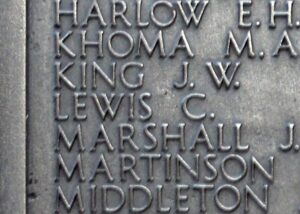
Arthur John Alexander Llewellin, Squadron Leader, 39998, Royal Air Force. Arthur was born in Bedwellty on 15 January 1917, the son of Arthur Ernest and Lillian Mary Llewellin. The family later resided at Llysdeg, Victoria Road, Newport. Arthur joined the RAF in June 1937 and after training as a pilot, joined 19 Squadron on 7 November 1938. He had a spell as an instructor before being posted to 255 Squadron at Kirton-in-Lindsey on 28 November 1940. Several months prior to his posting he married Pamela Frances Orr, of Woodford Wells, Essex. In October 1941 Arthur was given command of 232 Squadron, which had fought during the Battle of Britain, flying Hurricanes. In November 1941 the squadron embarked for overseas service, but by the time the convoy arrived in South Africa, the Japanese had attacked the Far East and 232 Squadron was diverted to Singapore. On 13 January 1942, the ground echelon disembarked at Singapore but the squadron’s pilots were embarked in HMS Indomitable two days later and flown off to Java on 27 January from a point 50 miles south of Christmas Island, as the Singapore airfields had become untenable. Air and Ground echelons were reunited at Palembang in Sumatra on 2 February but the Japanese landings forced a withdrawal to Java on 15 February. Arthur was killed while taking off from Singapore on 7 February 1942, when his Hurricane struggled to gain height and struck the mast of a junk, sending him crashing into Keppel Harbour. Arthur was 25 years old and is commemorated on the Singapore Memorial. (The CWGC give his date of death as 24 March 1942, but Brian Cull’s book ‘Hurricanes Over Singapore’ gives 7 February 1942, which is more likely to be correct).
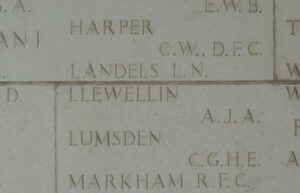
William Morris, Quartermaster, Merchant Navy. William was the son of Thomas and Margaret Ann Morris, of Dinas Cross, and the husband of Anne Morris, of Newport. He served in the Merchant Navy aboard the Liverpool registered steamship S.S. City of Guildford. William was among 129 men lost when City of Guildford was torpedoed by U-593, whilst steaming in Convoy XT-7 off Derna on 27 March 1943. Carrying a cargo of munitions, aviation spirit and general cargo, the doomed steamer sunk within minutes. William was 31 years old when he died that day, and is commemorated on the Tower Hill Memorial, London.
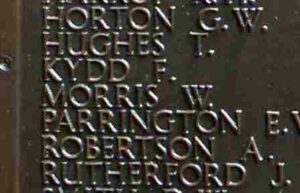
Arthur Norman Mowlam, Warrant Officer (Pilot), 516218, Royal Air Force. Arthur was the son of James Richard and Kate Clara Mowlam, and the husband of Margaret Ellen Mowlam, of Newport, Pembrokeshire. He served as a Pilot with 144 Squadron, Royal Air Force, which was a Coastal Command squadron, equipped with the Handley Page Hampden. Arthur was killed when his Hampden was brought down on a raid over France on 31 October 1942. He was 27 years old, and is buried at Brest (Kerfautras) Cemetery, France. Arthur is not commemorated at Newport.
Thomas Abadnego Nicholas, Chief Officer, Merchant Navy. Thomas was the son of Daniel and Mary Nicholas, of Newport, and served in the Merchant Navy aboard the M.V. Fook On (Hong Kong). Thomas was taken prisoner when the Japanese captured the city of Hong Kong, and was imprisoned in the infamous Stanley POW Camp. He became ill due to the terrible conditions in the camp and died there of tuberculosis and heart failure on 31 October 1942. He was 48 years old, and is buried in Stanley Military Cemetery, Hong Kong.
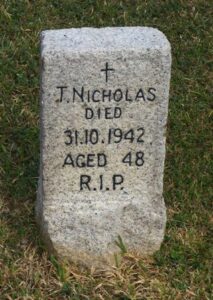
Leslie Edward Owen, Gunner, 14594627, Royal Artillery. Leslie served with the 107 (The South Notts. Hussars) Regiment, Royal Artillery, which had been created in North Africa from the survivors of 32 Regiment, R.A., and fought in the Western Desert and in Sicily before being moved to England at the beginning of 1944. The regiment landed in Normandy during D-Day, and fought throughout the Battle of Normandy, and into Northern France and Belgium into Holland. After supporting the Airborne Assault on Arnhem in 1944, the Battalion were rushed to the Ardennes, to reinforce the weakened American lines, during the German Offensive that was to become known as the ‘Battle of the Bulge’. Leslie was killed in action here on 20 December, 1944. He was just 19 years old, and is buried at Leopoldsburg War Cemetery, Belgium.
John Ross Rhedyneg Price, Lieutenant, 71422, Royal Engineers. John was the son of Gwilym and Hannah M. Price of Newport. He had worked his way through University, gaining a B.Sc. in Civil Engineering, and was an Associate Member of the Institute of Civil Engineers. This helped John gain a Commission into the 151 Railways Construction Company, Royal Engineers, and John served with them as part of the BEF in France in 1939. John was killed during the BEF’s retreat through northern France to Dunkirk on 10 May, 1940. He was 28 years old, and is buried at Merville Communal Cemetery Extension, France.
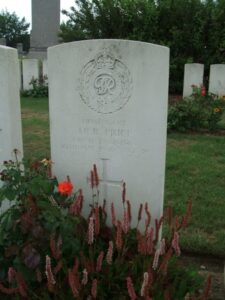
Evan Edward Richards, Chief Officer, Merchant Navy. Evan was the son of Edward William and Clara Nora Richards of Newport and the husband of Florence Jeanette Richards, of Ferndale, Glamorgan. He served as Chief Officer aboard the S.S. Pacific, which was torpedoed by a German Submarine on 1 March, 1941. Evan was killed during the resulting explosion, aged 41, and is commemorated on the Tower Hill Memorial, London.
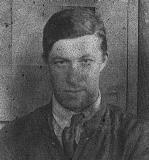
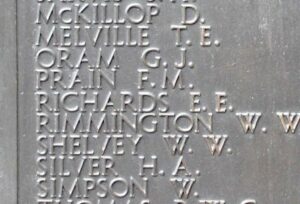
Thomas Summers, Driver, T/3704863, Royal Army Service Corps. Thomas was the son of Hercules and Mary Ann Summers, and the husband of Morfydd Summers, of Newport. He served in the Royal Army Service Corps, attached to the II Corps Ammunition Park, as part of the BEF in France in 1939, and was killed in action during the epic retreat to Dunkirk on 26 May, 1940 aged 36. Thomas is buried in Dozinghem Military Cemetery, Belgium
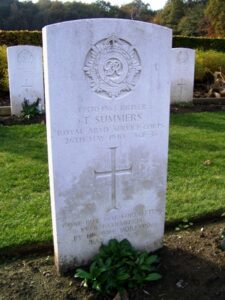
David Thomas, Boatswain (Bosun), Merchant Navy. David was the Husband of Eliza Thomas, of Newport, and served in the Merchant Navy aboard the S.S. Blairatholl (Glasgow). On 27 November, 1942 the Blairatholl collided with the Dutch ship John Bakke, and sank. David went down with the ship, aged 60, and is commemorated on the Tower Hill Memorial, London.
Rhys Thomas, Private, 7372578, Royal Army Medical Corps. Rhys was the son of Arthur and Louisa Annie Thomas, of Caerau, Glamorgan. He served with the Royal Army Medical Corps, in 32 Company, which was stationed in Singapore. Rhys was sadly killed during the Japanese invasion of Singapore, on 14 February, 1942 aged 24, and is commemorated on the Singapore Memorial.
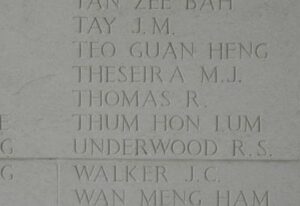
Thomas Daniel Varney, Assistant Steward, Merchant Navy. Thomas was the son of James Davies Varney and Diza Varney, of Newport. He served in the Merchant Navy aboard S.S. Norman Monarch (Glasgow). She was originally scheduled to be part of Convoy HX-125, but had been switched to the next, HX-126, which departed Halifax on 10 May, 1941. The cargo of the Norman Monarch was wheat, bound for Barry. On the night of 9/10 May, 1941 a torpedo struck the starboard side of the ship. Water flooded in, and at daylight the crew were ordered to abandon ship. They moved via the ships lifeboats to the waiting S.S. Harpagus, and they rejoined the convoy, with no casualties. However at 23.20 on 20 May the Harpagus was torpedoed, and sank in about 3 minutes. Thomas was killed during his second encounter with a U-Boat in ten days. He was just 21 years old, and is commemorated on the Tower Hill Memorial, London.
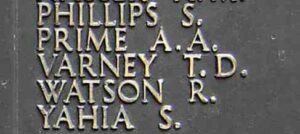
John Henry Wylde, Able Seaman, Merchant Navy. John was the son of Herbert James Wylde and Mrs. Wylde. He served in the Merchant Navy aboard the S.S. Dartford (London), which was a British Cargo Steamer built in 1930 and of 4,093 tons. On 12 June 1942 when on route from Tyne & Oban for Sydney, N.S.W. in ballast, she was torpedoed by U-124 and sunk. 30 lives were lost from a total crew of 47, one of which was John. He was 32 years old, and is commemorated on the Tower Hill Memorial, London.